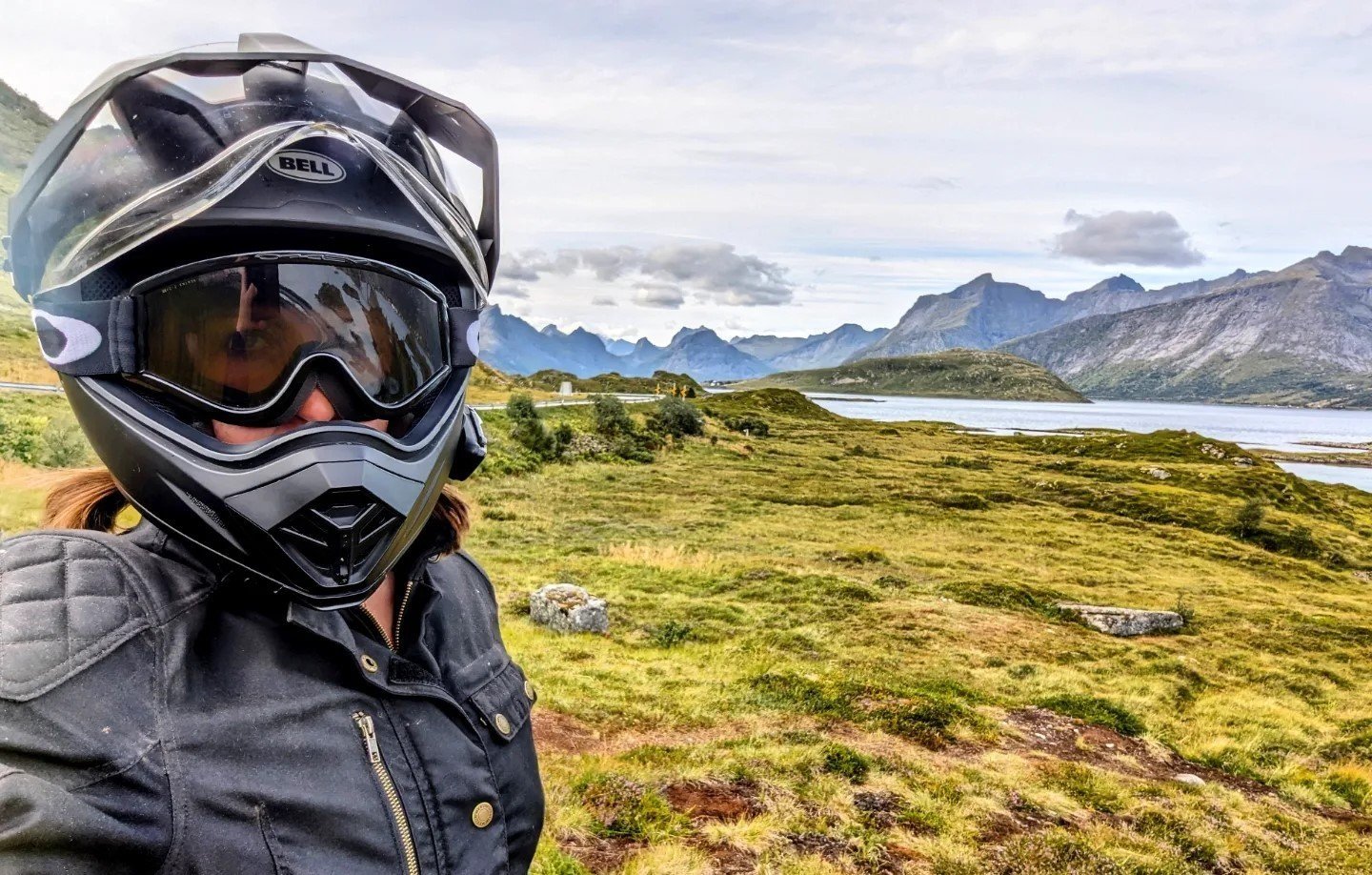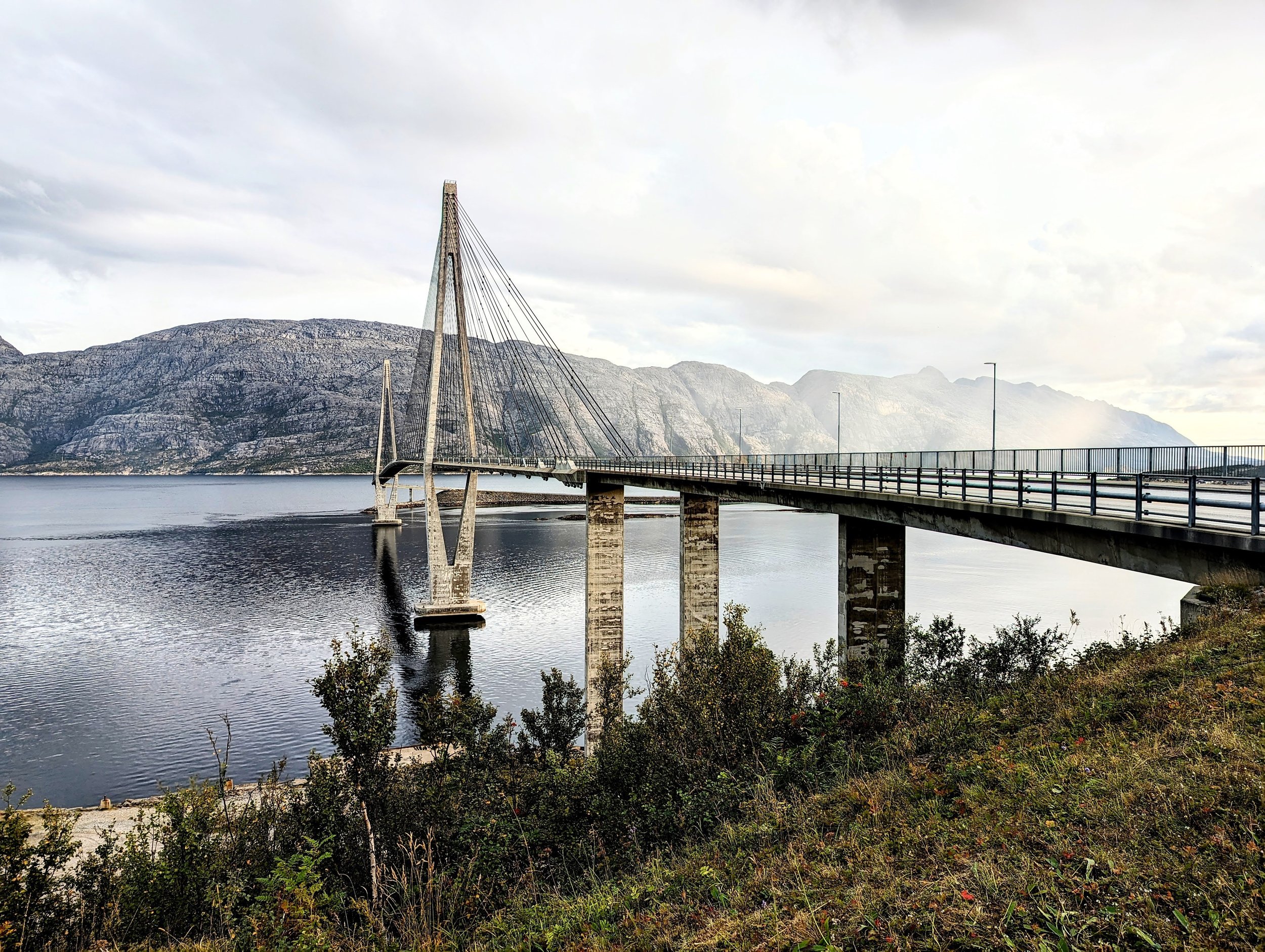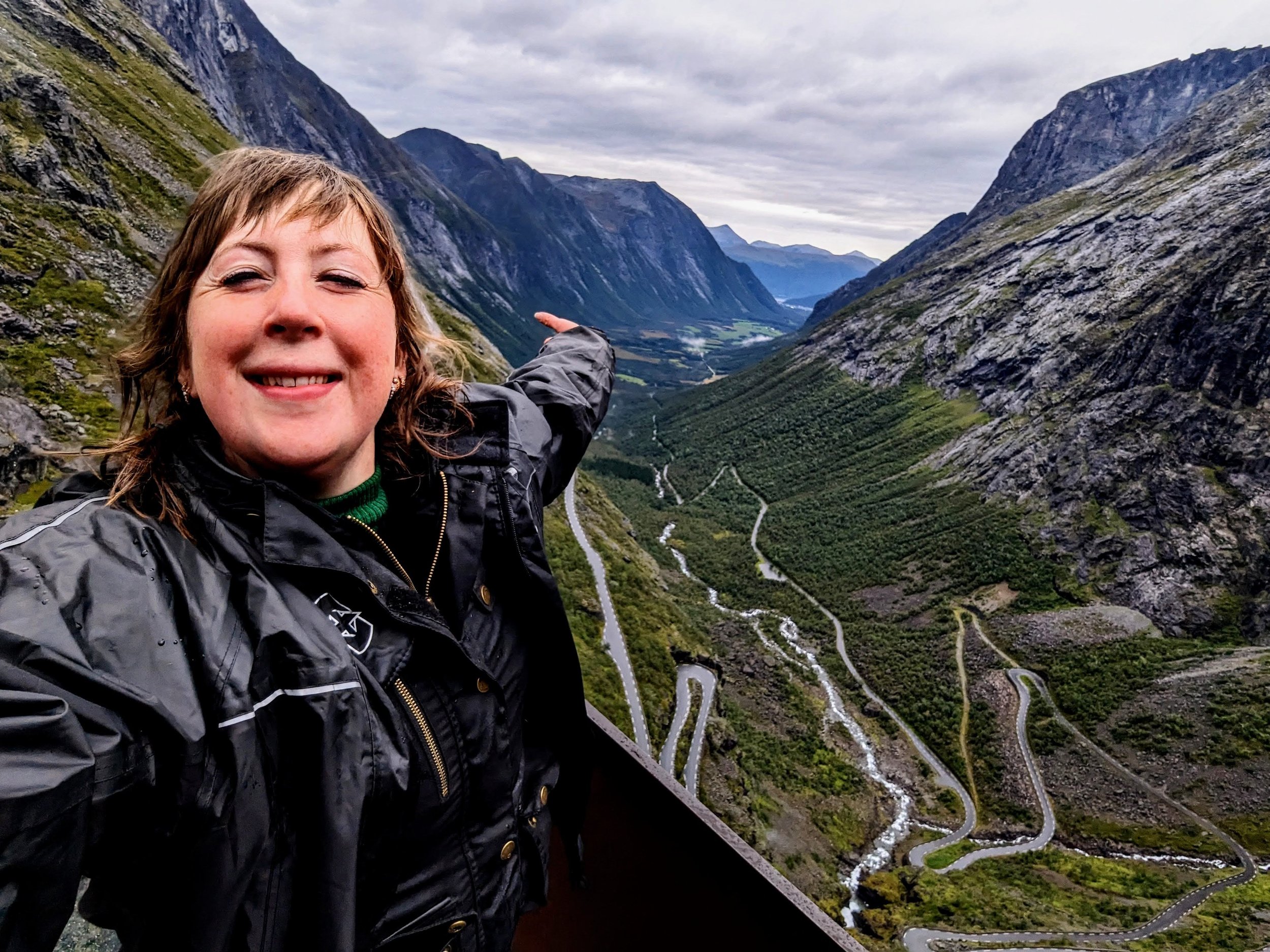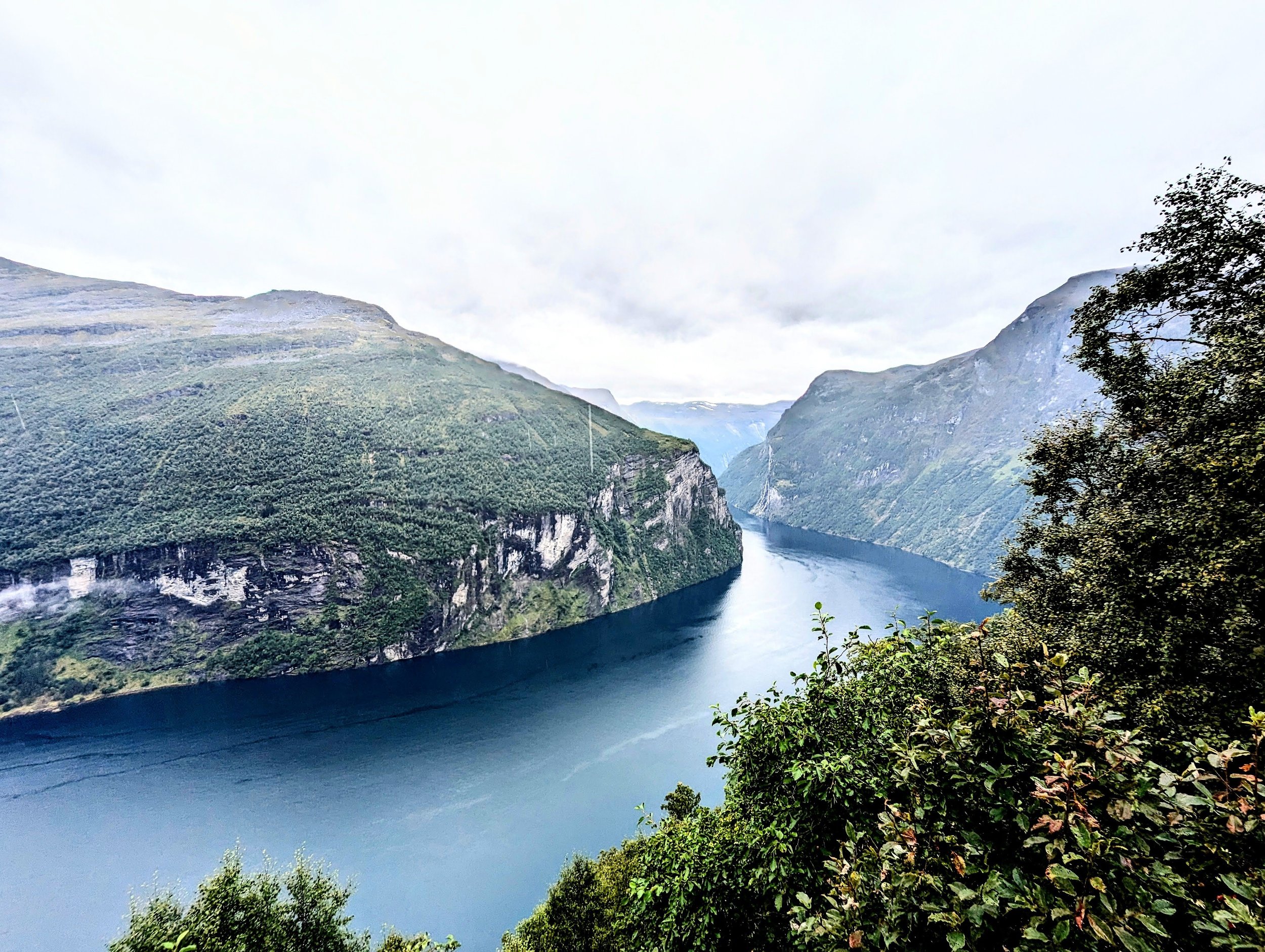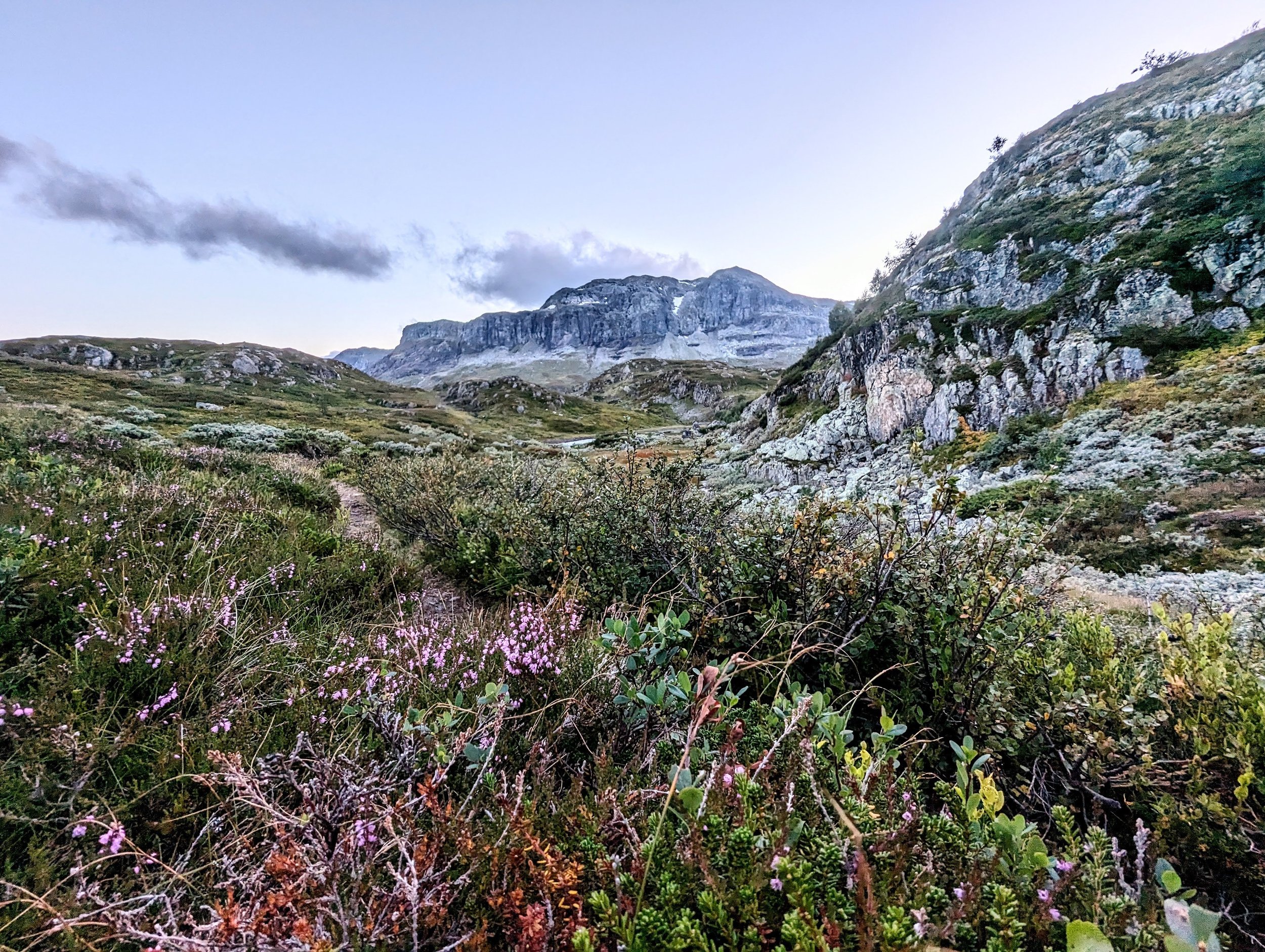The ArctiC Circle Part 2 - Wild Roads & Wanderlust
Venturing into Norway’s Untamed Wilderness: - From wild camping in remote landscapes and tracing the edges of majestic fjords, to conquering epic mountain passes and bidding a bittersweet farewell to Scandinavia, this journey was a true test of resilience, solitude, and the unfiltered joy of life on two wheels.
Lofoten Islands
I headed back to my tent to squeeze in a couple more hours of sleep before making my way south. This was, without a doubt, the worst night of sleep I had the entire trip—primarily because my feet were freezing. I wore my warmest socks, layered up with jumpers, and tried to settle in for some shut-eye. Only recently did I learn about sleeping bag slippers, and they are now a must-have for my next adventure. The moment my feet are cold, the rest of me is cold and it promises a night of no sleep.
As much as I would have loved to spend a few days exploring Nordkapp, the biting cold made it hard to justify lingering. I took one last moment to soak in the view at the “end of the world,” made a promise to return someday, and then pointed my bike south. Mile after mile, the sun slowly thawed my frozen body. You’d think, being Canadian, I’d be better at handling the cold, but I’ve come to accept that I’m just a shit Canadian—I much prefer slightly warmer climates over my homeland’s Great White North.
With exhaustion from a sleepless night creeping in, I called it early. I found a peaceful lake beneath the mountains, pitched my tent, and finally got the deep, much-needed sleep my body craved. My journey to the Lofoten Islands was nothing short of breath-taking. Winding coastal roads, towering fjords, and landscapes that left me in constant awe. No picture or memory truly does Norway justice, and even now, I yearn to return.
Before my final stretch to the islands, I stopped at the edge of a small fishing village that looked like it was lifted straight out of a postcard. Weaving between the mountains and along the coast, each turn was more stunning than the last. Crossing the bridges that connect the Lofoten Islands to the mainland, I finally reached my hostel—the only place on this trip where I would sleep in an actual bed. Nestled at the base of a small mountain on the edge of a lake, the hostel was the perfect base for exploring the Lofoten’s. That night, I relished the small luxuries: a hot shower, clean laundry, and a homemade meal on a proper stove. I took a sunset walk along the inlet, spotting colourful starfish in shades of blue, pink, and purple, their vibrant forms mirrored in the glass-like water. Knowing I had a fluffy duvet waiting for me, I fell asleep without the usual routine of pitching camp.
The Bed Thief
The past 24 hours of comfort and relaxation were rudely interrupted upon my return to the hostel. I had left my helmet and jacket on my bed and stepped out to make a coffee. When I returned, my belongings had been moved to another bunk. The three other girls in my dorm had no idea who had done it, but it was clear the newest guest was the culprit. Annoyed, I moved my things back. Moments later, I returned to find they had been shifted again. Frustrated, I went to reception, explaining the situation—someone had taken my bed instead of choosing an obviously fresh, unoccupied one.
Hamnoy, Lofoten
Just as I was making my case, a man from France overheard and chimed in, saying someone had been moving his things as well. The other girls and I tried to explain that he had, in fact, taken someone else’s bed and needed to make up his own. Unfortunately, the hostel staff refused to get involved, which soured my experience there. I eventually conceded, taking the new bed, leaving this entitled stranger to sleep in my used sheets. Despite the hostel’s idyllic setting, their lack of accountability means I won’t be returning. The Lofoten Islands? Absolutely. But I’ll be staying somewhere else next time.
I spent two more nights exploring Lofoten, soaking in the charm of its red stilted houses, tracing dirt roads along the coast to secluded beaches, and passing racks of dried fish—a common local snack. I took it slow, getting lost on backroads and simply enjoying the moment.
Plan your own tour through these beautiful islands yourself with the Lofoten’s Islands - What Not To Miss.
Nusfjord, Lofoten
Nusfjord, Lofoten
Hamnoy, Lofoten
Sakrisoy, Lofoten
Heading South
Ferry from the Lofoten Islands to Mainland
Getting off the ferry in the evening on the mainland, I immediately fell back into my wild camping routine—searching for a spot to settle for the night. I was happy to be on my own again, though I knew I’d miss the comfort of a proper bed. Still, there was a sense of calm in returning to the rhythm of wild camping in Norway, a routine I had missed during my few days in the Lofoten Islands. Each night had become familiar: finding a secluded spot, pitching my tent, cooking dinner, and cleaning up. Then, reading until the last light before wiggling into my sleeping bag. These simple moments in nature remind you that happiness and contentment require very little. That night, I found a beautiful lakeside spot with perfect rocks to perch on while watching the sunset.
Helgeland Bridge
The next day, I packed up my bike and hit the road, leaving the Arctic Circle in a downpour. A pang of sadness hit me—it meant I was really heading home, and the trip was coming to an end sooner than I would have liked. I meandered south, aiming to cross the Helgeland Bridge before finding another wild camping spot. A few kilometers out, completely alone on the road, I abruptly hit the brakes. A moose had just run onto the road about ten meters ahead and stopped, staring directly at me. If you’ve never seen a moose in person, they are massive—easily twice my height, with antlers as wide as a car. My little Honda stood no chance if he decided he didn’t like me. My heart pounded as we locked eyes, both of us frozen. I debated how fast I could spin my bike around if he charged. But neither of us moved. For what felt like an eternity—though it was probably just ten seconds—he stared, then turned and disappeared back into the forest. I sat there, amazed, waiting for my heartbeat to slow before restarting my bike and continuing on my way. Soon, I reached the Helgeland Bridge. As a civil engineer, I was captivated—its design was stunning, especially in the golden hour light. It quickly became my favorite bridge of the trip. After taking a moment to enjoy the view, I crossed and set up camp in an abandoned rock quarry at the base of a mountain.
The next morning, I woke up to steady rain and a foggy head. Two weeks of camping alone with little human contact had likely left my immune system vulnerable. I waited for a break in the rain that never came, eventually packing up in the downpour. Every hour, I felt worse. By 2 p.m., I gave up on making progress and found a campsite. The amenities were a blessing—a scorching hot shower, then straight into my sleeping bag to sleep off whatever bug I had caught. I woke up briefly to make soup in the communal kitchen before crawling back into bed. The next morning, I slept in until 10, feeling slightly better but still sluggish. The rain was relentless, so once again, I called it an early day, opting for another hot shower and extra rest in my sleeping bag. Riding while sick is miserable, and if I hadn’t been on a tight schedule, I would have stayed put for a few days to recover. But time was ticking, and I had already adjusted my route to make up for lost miles.
Atlantic Ocean Road
When I finally woke feeling somewhat human again, I packed up and found a café for breakfast. Sitting in the sun, soaking up some much-needed vitamin D, I savored my coffee before getting back on the road. Heading south, the landscape grew more populated. I detoured through a small city to reach the famous Atlantic Ocean Road. The route to get there wasn’t the most scenic, but the bridge itself was spectacular. Riding across, you climb upward with no view of the other side until you crest the peak and suddenly see the road drop dramatically ahead. Similar roads exist in the Lofoten Islands, but none at this scale. Pulling over at a viewpoint, I snapped a few photos before continuing. My goal was to camp near the base of the Trollstigen Pass and tackle the switchbacks early in the morning, avoiding tourist traffic. I found a scenic spot overlooking the mountains and water, pitched my tent, and cooked dinner on my Jetboil. Before settling in, I took a short walk along a nearby trail, where a small herd of goats decided to follow me for a stretch. Concerned they might follow me all the way back to my tent in search of food, I picked up my pace. Eventually, they lost interest, and I continued my peaceful evening stroll.
Trollstigen Pass
The next morning, rain greeted me again. I begrudgingly donned my waterproofs and packed up, knowing my gear would need drying later. I rode through the drizzle to the base of the Trollstigen Pass, where a statue of a troll riding a motorcycle stood, making me grin despite the dreary weather. The climb was nerve-wracking—technically a two-way road, but in reality, it felt like a single lane, with hairpin turns demanding tight, precise riding. Still recovering from my illness and sleep-deprived, I knew my technique was sloppier than I would have liked. The road was stunning, though—one waterfall cascades so close to the road that if you reached out, you could touch the water from your bike. I wished for a safe spot to stop and fully take in the view, but there was none. Pushing forward, I finally reached the top, where a few people gave me thumbs up—perhaps in admiration, or maybe just disbelief at the lone biker arriving in such grim conditions. I was thrilled to have made it. This was easily in my top three scariest mountain passes—minimal barriers, tight switchbacks, and relentless rain. Heart still racing, I climbed off my bike, ready to kiss the ground. But these moments—adrenaline-fueled, challenging, and unforgettable—are exactly what I live for. After wandering around, I stopped at a shop and picked up a comically ugly little troll as a memento of the climb.
Geiranger Fjord
Gamle Strynefjellsvegen
The ride through the mountains that followed was one of the coldest and most miserable of the trip. The roads were slick, the rain ceaseless. If I hadn’t been on a schedule, I would have booked a night in an Airbnb just to warm up and enjoy the view from indoors. Instead, I pressed on to Geiranger Fjord, one of Norway’s most famous. The viewpoints along the way were breathtaking, though the sheer number of tourists was jarring after weeks of solitude. While undeniably beautiful, I had seen equally stunning, if not better, views elsewhere—minus the crowds. Eager to escape the congestion, I moved on to the Gamle Strynefjellsvegen, also known as the Wilderness Road. The conditions were brutal—slick roads, freezing rain, and painfully slow progress. Even with my trusty 75/25 tires, I was slipping constantly, at times forced to paddle my way forward. But the landscape made it all worth it—Børgefjell National Park, Røssvatnet (Norway’s second-largest lake), and the Okstindan mountain range. The challenge, the solitude, and the raw beauty of it all—that’s why I ride.
Låtefossen Falls
From here, the trip was quickly coming to a close—at least the Scandinavian portion of it. I was on a strict schedule to meet my parents in the Netherlands for a family holiday before heading back to the UK, and I was still far from the Kristiansand ferry. With time running out, I had to make some tough choices, sadly cutting out Bergen and the famous Fantoft Stave Church—places I now know I’ll have to return to when my travels bring me back to Norway. Instead, I opted for a more direct route, ferry-hopping and visiting a few breathtaking waterfalls: Tvindefossen, Skjervsfossen, and Låtefossen. I spent one last night wild camping before reaching civilization in Kristiansand, preparing for my bright and early 7 AM ferry departure.
My final night of wild camping took place in Hardangervidda National Park, and it did not disappoint. I was surrounded by small mountains blanketed in beautiful purple heather. I spent the evening hiking the area, enjoying a cozy dinner, and savoring one last night under the stars, completely alone in the wilderness. It was the perfect way to end my adventure—except for the freezing temperatures. The next morning, as I packed up my bike and began the final ride south, I felt a deep sense of emotion. Four weeks in Scandinavia had brought many firsts, challenged my fears, and presented unexpected obstacles that pushed me beyond my limits. Nights spent wild camping alone and days upon days of solo riding on the TET created memories that I will cherish forever.
Hardangervidda National Park
As I neared the end of my journey, I realized just how much I had fallen in love with this incredible place. My heart felt full, yet heavy, knowing my time here was over. Scandinavia had left a mark on me, and I knew I would return. Boarding the ferry, I silently thanked this beautiful land for the experience, promising myself that this was not goodbye, but rather, "until next time."
Two months after my return home, I found myself struggling to adjust back to "normal" life. The simplicity of life on the road—carrying everything I needed, moving from place to place, and immersing myself in the vast solitude of nature—was something I craved deeply. The contrast between the rat race of daily life and the freedom of my journey felt overwhelming. When I am out there, riding through surreal landscapes, I feel truly present. My heart feels full. I know I am exactly where I am meant to be.
But life calls. Bills need to be paid, responsibilities must be met, and reality demands my attention. So, until my next adventure, I will hold onto these memories, knowing that soon enough, I will once again chase the horizon.
Interested in this amazing adventure through Scandinavia? Check out The Ultimate Arctic Circle Motorcycle Itinerary.


